
If there’s a canonical example of the buddy cop genre, it might well have to be this franchise, which plays like the bastard child of Miami Vice and Beverly Hills Cop. Some might give that title to Lethal Weapon, and that did get there first. But I feel that the combination of Will Smith and Martin Lawrence with the powerhouse commercialism of director Michael Bay, built upon that foundation and set the standard against which all other entries now need to be measured. It’s certainly the champion in terms of longevity, with a fourth installment due out in June, close to thirty years after Mike Lowrey and Marcus Burnett first arrived on cinema screens.
Things might have been very, very different. When the concept was originally conceived, it was called Bulletproof Hearts and producers Don Simpson and Jerry Bruckheimer saw the project as starring… um, Dana Carvey and Jon Lovitz? After the decision to go black was made, Eddie Murphy and Wesley Snipes was another suggested partnership. The producers basically went top-down, starting with Arsenio Hall, who wanted to do more acting after the end of The Arsenio Hall Show. But Hall declined, and Lawrence was next man on the power list, being a TV star in sitcom Martin. Smith was also a TV star in The Fresh Prince of Bel-Air, making a logical choice as a partner. It’s a testament to the chemistry between him and Lawrence than all other casting choices now seem faintly ridiculous.
It’s also startling to realize that the first film also marked Bay’s directorial debut. Before Bad Boys, he had been directing commercials and music videos, including I Touch Myself by Divinyls and Meatloaf’s I’d Do Anything For Love (But I Won’t Do That), as well as Kerri Kendall’s Video Centerfold for Playboy. These projects got him the attention of Simpson and Bruckheimer, who gave Bay his break into the movies, with the modestly-priced project, at a budget of $19 million. That’s not much more than half the $34 million cost of the average studio movie in 1995, inflated by the likes of Cutthroat Island and Waterworld. It wouldn’t last – Bad Boys II cost $130 million, with Smith alone taking home more than the entire budget for the first movie. But at the time, Bad Boys was a relatively small-scale project.
It was one that paid off handsomely, taking $141 million worldwide, and the sequels have improved on that. Bad Boys II raked in $273 million, though that massively-increased budget certainly ate into the profits. After a seventeen-year hiatus, service was resumed with Bad Boys: For Life in 2020, and the audiences appetite for Messrs. Lowrey and Burnett proved stronger than ever, with a gross of $426.5 million on its $90 million budget. That made it the biggest American movie of the year, both domestically and worldwide, albeit helped by getting out there before the COVID hit the fan. Needless to say, expectation are high for the fourth installment, announced as soon as the success of part three was apparent. As we head towards its release, let’s review the history of the franchise (and drop in #4 when it arrives). Although not spin-off TV show, L.A.’s Finest…
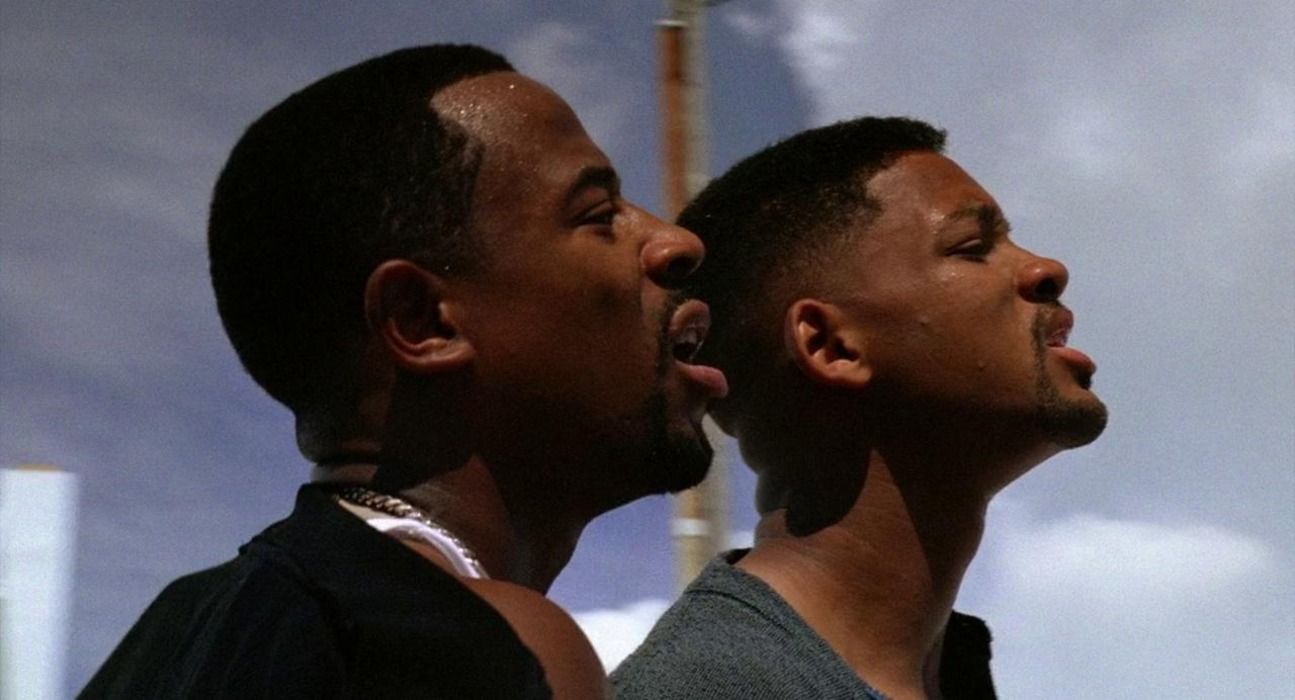
Bad Boys (1995)
Rating: B-
Dir: Michael Bay
Star: Martin Lawrence, Will Smith, Téa Leoni, Tchéky Karyo
Watching this, almost thirty years later, what stands out is how Smith plays both the straight man and second fiddle to Lawrence’s top banana. Since this came out, Will became arguably the world’s biggest movie star for a decade, before his reputation crashed in a welter of bad movies (After Earth), Oscar slaps and domestic troubles. Lawrence? Not so much. I couldn’t immediately tell you any non-Bad Boys movie of his since roughly… 2007? But at the time, his sitcom Martin was one of Fox’s highest rated shows, and it’s Lawrence who takes centre stage here. His married, working-class detective, Marcus Burnett, is paired with trust-fund playboy cop Mike Lowrey (Smith), in an archetypal mismatch of contrasting characters.
However, unlike some in the buddy cop genre, their relationship is already well-established. They bicker over the little things, but trust each other with their lives, and are at the point where Lowrey is “Uncle Mike” to Burnett’s kids. They have to investigate the theft of $100 million of seized heroin, stolen from a police vault by Fouchet (Karyo). They find a key witness, Julie (Leoni), but because… of reasons, she ends up thinking Burnett is Lowrey. They end up staying in Lowrey’s penthouse for her protection, while he lives with the Burnett family to sustain the deception. Meanwhile, as is traditional for the genre, Internal Affairs is circling menacingly, eventually resulting in the pair having just [insert time period] to solve the case.
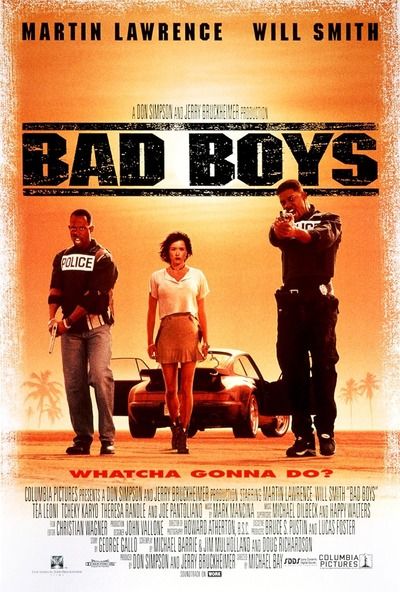 I can’t say whether much of the plot was fresh or original at the time of release. Now, it certainly isn’t. However, neither is it particularly the point. We’re here for foul-mouthed banter, police procedures that skate the line of civil rights abuse, and – this being a Michael Bay movie – giant fireballs. Though it being his first, you can tell he’s still finding his feet as he transitions from music videos to narrative work. The ending, blowing up an aircraft hangar real good, definitely points toward things to come. Memo to self: if I ever become an evil drug overlord, I will not carry out deals in the same location where I store large barrels of ether or other flammable chemicals.
I can’t say whether much of the plot was fresh or original at the time of release. Now, it certainly isn’t. However, neither is it particularly the point. We’re here for foul-mouthed banter, police procedures that skate the line of civil rights abuse, and – this being a Michael Bay movie – giant fireballs. Though it being his first, you can tell he’s still finding his feet as he transitions from music videos to narrative work. The ending, blowing up an aircraft hangar real good, definitely points toward things to come. Memo to self: if I ever become an evil drug overlord, I will not carry out deals in the same location where I store large barrels of ether or other flammable chemicals.
The other elements though are fine or better. Smith and Lawrence play off each other beautifully, to the point that their exchanged “I love you, man” lines at the end seem perfectly natural and reasonable, no homo. The script is kept lively by Bay allowing his cast to improvise, and the pair of leads are appealing across cultural boundaries, despite (or because of?) snarky lines like, “There’s too much bass in your voice. That scares white folks.” It helps they are made genuinely competent, Lowrey pointing out, “I’m the first guy through the door and I’m always the last one to leave the crime scene.” It all makes for the kind of slick, well-crafted and empty slice of entertainment, which Hollywood studios are perfectly equipped to create.
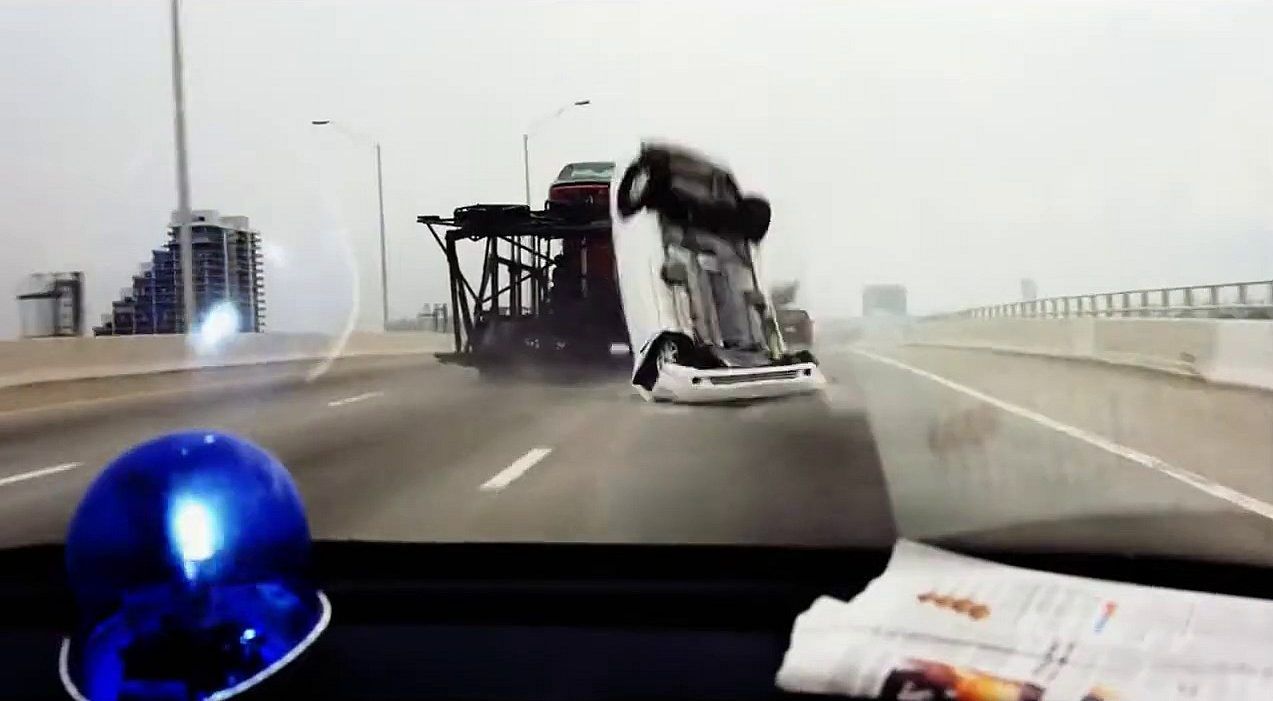
Bad Boys II (2003)
Rating: B
Dir: Michael Bay
Star: Martin Lawrence, Will Smith, Jordi Mollà, Gabrielle Union
Over the eight years since the original, Bay had been busy, making The Rock, Armageddon and Pearl Harbor, leaving the relatively small-scale Bad Boys in the dust. Smith, too, had moved on up, becoming a superstar with Men in Black and Independence Day. Lawrence? I guess Big Momma’s House was a thing, for some reason entirely lost on me. Still, it was all enough to get a budget almost seven times the size of its predecessor, at a hefty $130 million, twice the price of the average studio production that year. While the leads and director certainly got a good slice of it, you’d be hard pushed to claim the money is not up there on the screen.
Once again, Miami is being threatened by foreigners and drugs. In this case, it’s Cuban gangster Johnny Tapia (Mollà), who’s importing huge quantities of Ecstacy and distributing both it and the resulting cash, sewn into corpses. It’s up to narcotics department detectives Marcus Burnett (Lawrence) and Mike Lowrey (Smith) to stem the tide. Also involved is Marcus’s sister, Sydney (Union), who is infiltrating Tapia’s gang as a DEA agent, while dating Lowrey, unbeknownst to her brother. It all ends with her kidnapped and taken off to Cuba by Tapia. With the government moving at a glacial pace to achieve her release, it’s up to our heroes, along with a cadre of anti-Castro locals and some Latino colleagues, to storm Tapia’s compound and rescue Sydney.
 Before we arrive there though, we get what’s some of the finest vehicular mayhem ever committed to screen. I refer, in particular, to the freeway chase which sees Haitian thugs chasing after Sydney in a car-transporter – clearly the optimum pursuit vehicle. Marcus and Mike are hotly pursuing in the latter’s Ferrari, with a slew of others present to act as the automotive equivalents of red shirts on Star Trek. Especially when the Haitians start dropping cars off the back of the transporter. It’s the kind of gloriously, largely physical carnage we may never see again, in these days of pixel manipulation [While Fury Road went somewhere similar, its post-apocalyptic setting provided a sense of distance] I’d not argue if you said the sequence is the pinnacle of Bay’s career.
Before we arrive there though, we get what’s some of the finest vehicular mayhem ever committed to screen. I refer, in particular, to the freeway chase which sees Haitian thugs chasing after Sydney in a car-transporter – clearly the optimum pursuit vehicle. Marcus and Mike are hotly pursuing in the latter’s Ferrari, with a slew of others present to act as the automotive equivalents of red shirts on Star Trek. Especially when the Haitians start dropping cars off the back of the transporter. It’s the kind of gloriously, largely physical carnage we may never see again, in these days of pixel manipulation [While Fury Road went somewhere similar, its post-apocalyptic setting provided a sense of distance] I’d not argue if you said the sequence is the pinnacle of Bay’s career.
It’s certainly the pinnacle here, though the rest still entertains, Smith and Lawrence still playing off each other well. The mortuary “sneak and peek” stands out, like its corpse tits, as does the duo’s savage verbal beatdown of a potential boyfriend for Marcus’s daughter. This famously caused Roger Ebert to ask, in his one-star review, whether the film-makers have “so lost touch with human nature that they think audiences will like this scene?” Which just tells me, Ebert never had a teenage daughter. It is fair to say that 147 minutes is too long for the movie, with some scenes serving little purpose. I remain hard-pressed to argue this is other than a very good use of $130m. But is it true that there’s a point on a man’s head, where if you shoot it, it will blow up?
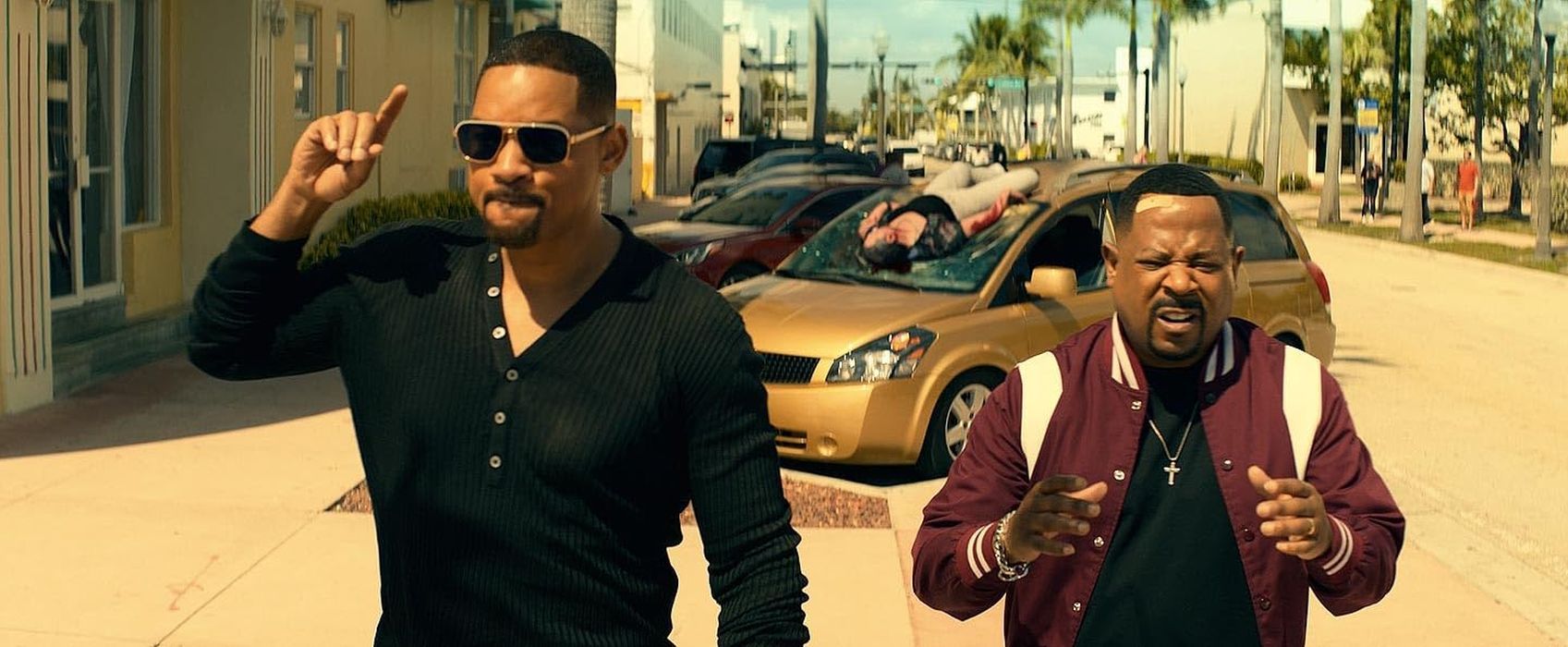
Bad Boys for Life (2020)
Rating: C+
Dir: Adil El Arbi, Bilall Fallah
Star: Will Smith, Martin Lawrence, Jacob Scipio, Paola Núñez
Seventeen years after the previous installment, Mike Lowrey (Smith) and Marcus Burnett (Lawrence) team up again. This time though, Michael Bay was not behind the camera. It’s not clear exactly why: cost is the most-common explanation, though it clearly didn’t stop them in part II. Perhaps the studio were concerned that, after such a long gap, audiences might have moved on. Success wasn’t guaranteed here. Bay had also just finished 6 Underground, so simply may not have been ready for another production. Whatever the reason, it seems to have been amicable enough, with Bay popping in to do a cameo as a wedding DJ.
This edition went through a slew of writers, with intended director Joe Carnahan also leaving the project due to either “scheduling conflicts” or “creative differences”. He retains a writing credit. I can’t say why replacements Adil & Bilall, with no track-record on a project this size, were brought in. Though again, the original Bad Boys was Bay’s feature debut. They certainly helped reduce the cost, this one coming in at $90 million, less than half the cost of part two, after you adjust its budget for inflation. The Belgian duo seem like the Diet Pepsi version of Michael Bay. Or, perhaps more accurately, the “0% alcohol Guinness” version, intent on making a Michael Bay movie for people who don’t like Michael Bay. All the car-chases and explosions! None of that annoying old-school chauvinism!
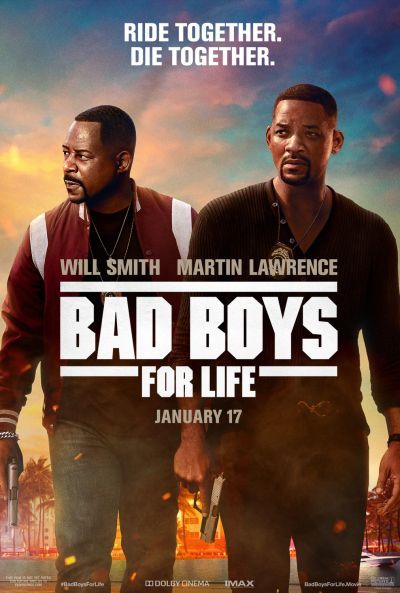 Wisely, there are some adjustments made. Lawrence is now in his mid-fifties, and so Marcus just wants to retire and enjoy time with his family. On the other hand, Mike is still all sports cars and resolutely single, even though Smith is only three years younger. Things take a sombre turn when Mike is gunned down in the streets, one of several victims in a vendetta carried out by Isabel Aretas, a Mexican crime boss known as La Bruja (the witch). She sends her son Armando (Scipio) after all those who got her sent to jail, and that includes Mike. He survives – the only person attacked by Armando to do so, what are the odds? – and vows to track his attacker down, with or without the help of Marcus. But preferably with.
Wisely, there are some adjustments made. Lawrence is now in his mid-fifties, and so Marcus just wants to retire and enjoy time with his family. On the other hand, Mike is still all sports cars and resolutely single, even though Smith is only three years younger. Things take a sombre turn when Mike is gunned down in the streets, one of several victims in a vendetta carried out by Isabel Aretas, a Mexican crime boss known as La Bruja (the witch). She sends her son Armando (Scipio) after all those who got her sent to jail, and that includes Mike. He survives – the only person attacked by Armando to do so, what are the odds? – and vows to track his attacker down, with or without the help of Marcus. But preferably with.
As always, the film comes to life when the two leads are riffing off each other. Yet, for one reason or another, there seems less of this than normal. It is occasionally nicely self-aware, such as Marcus proclaiming “This is some real telenovela shit!” at one point as the plot thickens. That’s especially appropriate since La Bruja is played by Kate Del Castillo, best known for playing the original Queen of the South in one of the most successful of Mexican narco-soaps. The action is solid, likely peaking with a chase through the Miami streets, yet lacks much in the way of truly memorable moments like the freeway chase. It’s all polished, to an extent that any edge has been entirely removed, and is largely unmemorable as a result.
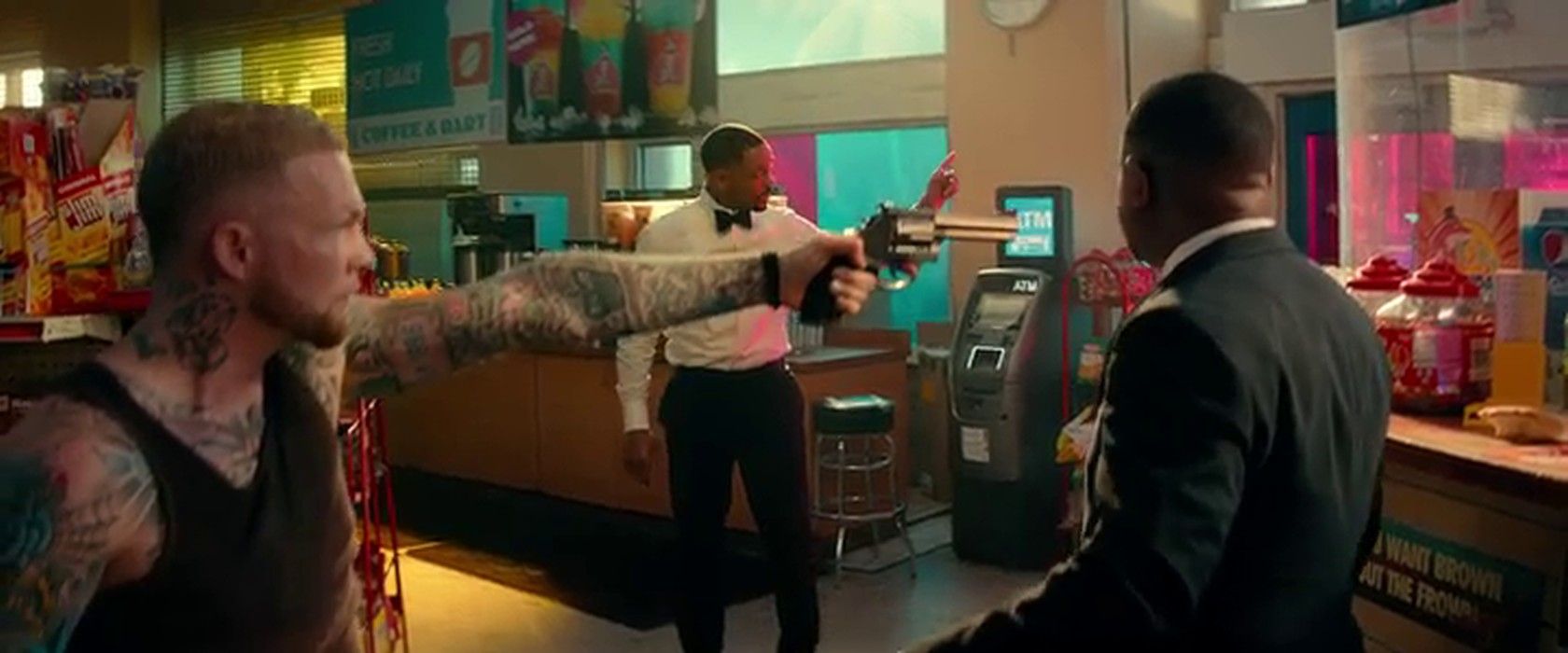
Bad Boys: Ride or Die (2024)
Rating: C+
Dir: Adil El Arbi, Bilall Fallah
Star: Will Smith, Martin Lawrence, Jacob Scipio, Eric Dane
I was a little surprised this got made at all, after The Slap Heard Round the World. But I guess Hollywood will forgive anyone, if they put enough butts in seats. Though I was amused by the film’s tacit acknowledgement of the incident, with a scene in which Marcus Burnett (Lawrence) slaps his long-time cop partner, Mike Lowrey (Smith), repeatedly, while yelling “Bad boy!”. Otherwise, it’s largely what you’d expect. Nice it leans into the age of Burnett in particular, with him having a near-fatal heart attack at Lowrey’s wedding. This gives him an… interesting outlook on life, now believing he can’t die, and that he and Lowrey are reincarnated partners from previous lives.
In terms of actual plot, it begins with someone trying to frame their late boss, Captain Howard, as on the take. Lowrey and Burnett won’t stand for that, and uncover a network of corruption, run by former Army Ranger McGrath (Dane). But trying to expose it puts their families in danger, including Armando (Scipio), whom if you remember, was Lowrey’s son by Isabel Aretas from the previous installment. In other words, a fairly thin excuse: quite why the bad guys bother planting evidence on a dead man nobody really cares about, is never clear. It does the job, providing a pretext for car chases, gun battles and foul-mouthed banter. [At least they didn’t go PG-13. Rated R for “strong bloody violence, language throughout, sexual references, and brief drug use”]
 We had some difficulty remembering whether or not we’d seen this. Even the trailer didn’t help. I persisted, mostly in the belief, I would have reviewed it if I had. I’m still not prepared to swear I had not watched it before. I suspect, by the time this review is published, it will be the sole evidence for my viewing, my memory of the experience having melted like snow off a dike. Am I growing old and feeble? Or is it just a shiny Hollywood bauble, highly polished and forgettable? Could be a bit of both. Despite the rating, this certainly feels like a hundred million dollar episode of Miami Vice, between the fast cars, high fashion and pop soundtrack.
We had some difficulty remembering whether or not we’d seen this. Even the trailer didn’t help. I persisted, mostly in the belief, I would have reviewed it if I had. I’m still not prepared to swear I had not watched it before. I suspect, by the time this review is published, it will be the sole evidence for my viewing, my memory of the experience having melted like snow off a dike. Am I growing old and feeble? Or is it just a shiny Hollywood bauble, highly polished and forgettable? Could be a bit of both. Despite the rating, this certainly feels like a hundred million dollar episode of Miami Vice, between the fast cars, high fashion and pop soundtrack.
There are some decent action sequences, directed with enthusiasm. A crashing helicopter offers one, though I think my favourite may have been a relatively brief fight in a descending elevator. These help balance the obvious and dumb nature of the plot. Yet the film leans into its own idiocy, not least in a post-credit sequence set thousands of years ago. It’s a ludicrous payoff to a mid-movie discussion, and also riffs on one of Smith’s most famous roles. Weirdly, I found myself wanting Bad Boys 5 to be entirely along the same lines: Burnett and Lowrey tripping through history. I’m not sure if that’s tribute to the chemistry of the characters, or an indication towards the generic nature of this fourth installment.
